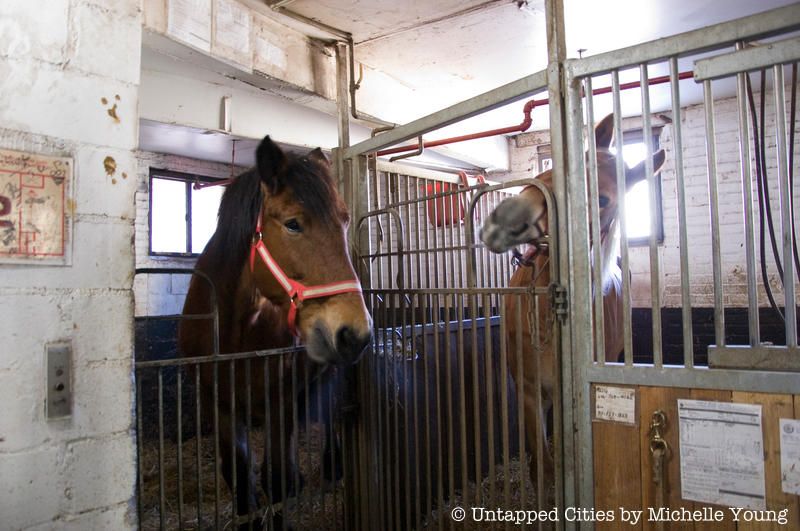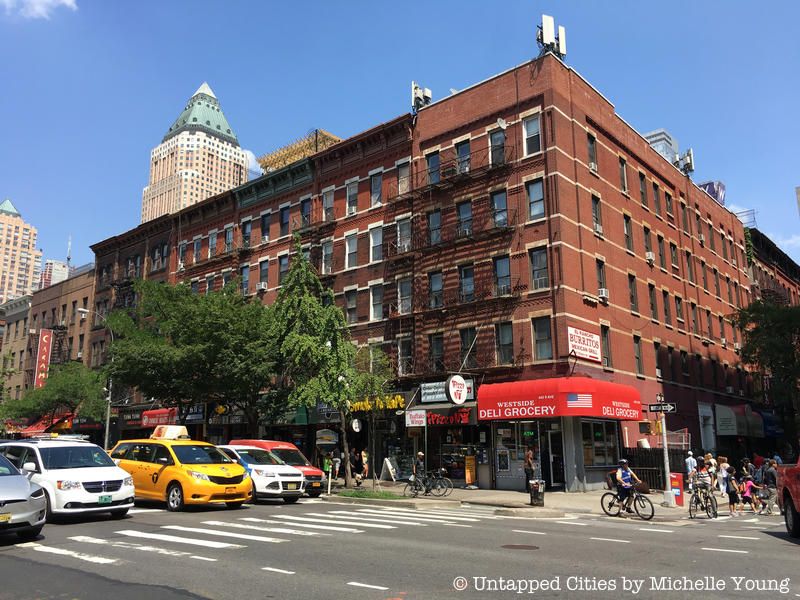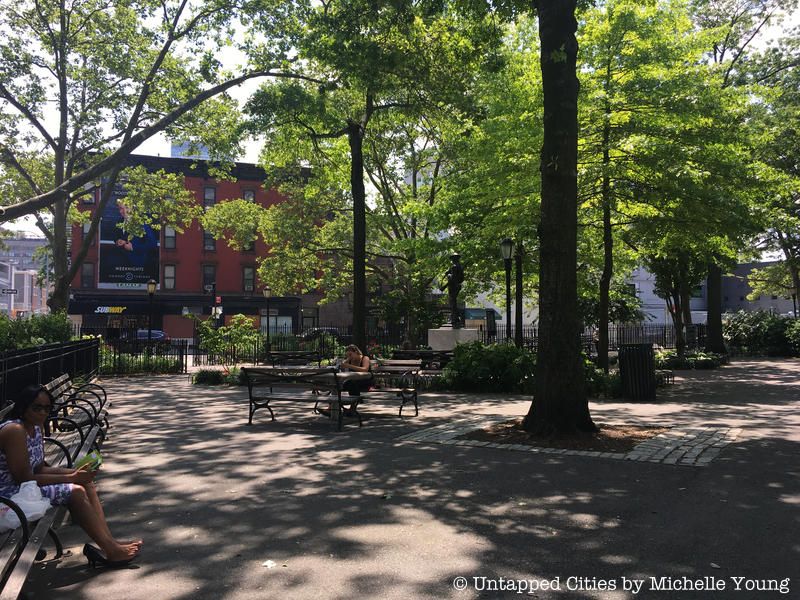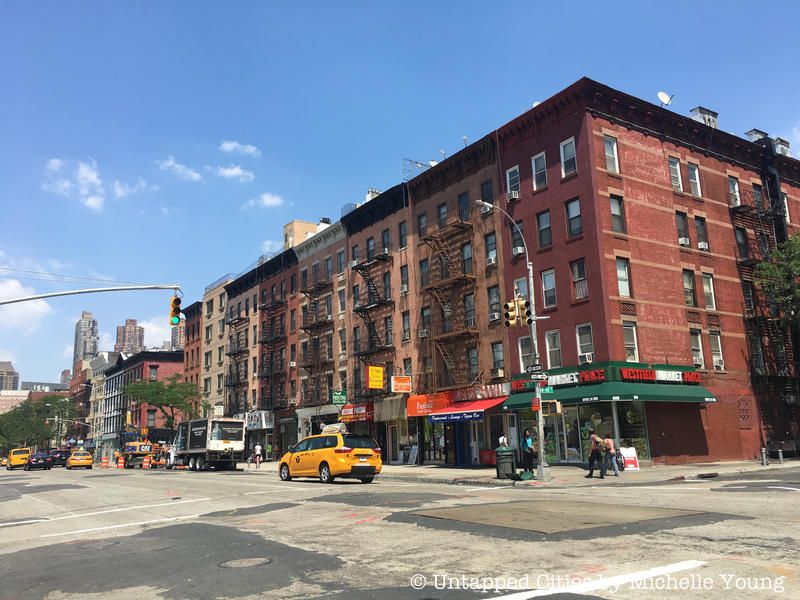Last Chance to Catch NYC's Holiday Notalgia Train
We met the voices of the NYC subway on our nostalgia ride this weekend!



Hell’s Kitchen has a history that’s rich with gangsters, ghosts, mysterious disappearances and speakeasies, and was considered a dangerous place to live right up until the 1980s. Though it’s now known for its theaters, chic restaurants and luxury apartments, it still retains a few secrets, many of which remain unknown to locals.

39th between 9th and 10th Avenue today, where most of the buildings near 10th Avenue have been demolished
The story goes that in the 1880s, a New York Times reporter went to the West 30s with a police guide to get details of a multiple murder. He referred to a particularly infamous tenement at 39th Street and Tenth Avenue as “Hell’s Kitchen,” and said that the entire section was “probably the lowest and filthiest in the city.” According to this version, 39th Street between 9th and 10th Avenues became known as Hell’s Kitchen and the name was later expanded to the surrounding streets. Today, not much is left at 39th Street and 10th Avenue, demolished for the on ramp to the Port Authority Bus Terminal.
Another famous photographer who documented the crime in Hell’s Kitchen was Weegee, who developed a close relationship to the police in order to get access to crime scenes.

Sandwiched between two buildings on West 46th between 9th and 10th Avenue is Clinton Court, a beautiful secluded courtyard with a carriage house-turned residence at the south end. Small buildings built behind houses or commercial structures were common in the 19th century and homes often had smaller houses (used as rental income) or stables on the back lots like this one.
According to Daytonian in Manhattan, it was built in 1871 by a local builder, Robert Auld, as a stable of sorts, with horse stalls on the lower level. Today, it’s a multi-residence private community. The buildings converted to co-ops in 1987, with the long-time residents ‘sharing the camaraderie of an extended family.’ There are 18 apartments inside.

In addition to its secret location, Clinton Court is also considered one of the most haunted buildings in New York. Legend has it that at least three women have jumped to their deaths from the roof and according to the New York Times, long ago, a mutinous sailor known as Old Moor was hanged in the courtyard, his ghost appearing to the wife of the resident family’s coachman; she fell down several flights of stairs, sustaining mortal injuries. The wife joined Old Moor on nightly patrol and the legend of the courtyard grew. For years, the family’s grandchildren impersonated ghosts as a game until an apparition rose up one evening and frightened one of them so badly that she, too, took a tumble down the stairs, thereby adding another ghost to the already crowded courtyard.

Inside Clinton Park Stables
Although Mayor De Blasio originally pledged during his campaign to drive the horses and carriages out of the city, the Hell’s Kitchen area was once at the heart of the city’s carriage-making industry, which meant that for a long time, it was full of stables. Today, there are only four carriage stables left in the city: all are privately owned and located within a 15-block stretch of the same neighborhood, between 37th and 52nd Streets off of 11th Avenue.
The largest of them, Clinton Park Stables, was built in the 1860s for the city’s sanitation department, housing the horses that pulled street sweepers and garbage wagons. Today, it’s home to 78 horses that pull 39 of only 68 carriages that are licensed to operate in the city.
Next, take a behind-the-scenes look into the Clinton Park Stables.

It was in his apartment building at 412 West 47th Street in the 1920s that Harold Ross began the publishing institution known as The New Yorker in 1925. Frequent visitors to this building included literati such as Dorothy Parker, Ogden Nash, George Gershwin Harpo Marx and other members of the Algonquin Round Table. Since then, it’s moved to 4 Times Square and most recently to 1 World Trade Center.

Built in 1881, the Windmere is the second-oldest apartment block in Manhattan. In 1980, as part of an effort to empty and redevelop the site, then-owner Alan B. Weissman ripped off doors, moved in prostitutes and sent the tenants death threats. However, he failed to force them all out. In September 2007, the fire department evacuated the remaining seven residents from the building, citing dangerous conditions. It’s now a heritage listed building, and in 2008 the New York Supreme Court ruled that the owners of the building must repair it but it continues to be under scaffolding to this day.

At Ninth Avenue between West 45th and 46th Streets, on the east side of the street, you’ll find a fine example of immigrant housing from the mid 1800s and early 1900s. Most of the tenement buildings in Hell’s Kitchen were demolished during construction in the 1930s to 1950s, which included the building of the Lincoln Tunnel to New Jersey, but this row remains remarkably intact.

The first community gardens in New York City — or farm gardens as they were originally known as — appeared in 1902 in De Witt Clinton Park, spearheaded by a Mrs. Henry G Parsons, who went on to become one of the first senior-level park administrators. Children from nine to 12 years of age cultivated plants, flowers and crops including corn, beets, beans, peas, turnips, lettuce, spinach, cabbage, celery, and radishes. A farmhouse was also built where girls were taught how to do house chores and boys learned outdoor tasks.
In addition, the program showed participants the proper way to cook their harvest and Parsons proudly noted that girls were taught how to farm right alongside boys, a fundamental part of Farm Garden education at the time. Both boys and girls kept diaries and tracked the progress of their vegetables during the growing season. The Farm Garden at De Witt Clinton Park lasted until 1932, when construction on the West Side Highway cut into the park’s boundaries.

Dotted in various spots around New York are these quirky named memorials to young men who lost their lives in World War I. This one in Hell’s Kitchen was put up in 1929 and bears an inscription of the last three lines of the poem, In Flanders Fields, written by John McCrae, a surgeon at Ypres. No one really knows where the term ‘doughboy’ came from; it may have been coined in the 19th-century, stemming from the doughnut-like buttons on soldier uniforms, or from their doughy rations.
Next, check out 10 Traces of World War I You Can Still Find in NYC.
 Hell’s Kitchen today.
Hell’s Kitchen today.
Before Hell’s Kitchen became the turf of gangs and gangsters, things were looking rosy along the Hudson River in Midtown Manhattan – an area once covered with green flower-filled meadows that the Dutch settlers called Bloemendael (later anglicised as Bloomingdale), meaning the Vale of Flowers. It was also known as the Great Kill District — ‘kill’ being the old Dutch word for ‘creek’, in reference to a little river that once ran through the area and out into the Hudson River.
Next, check out the The Untapped Guide to Hell’s Kitchen and read about Gang History in Hell’s Kitchen. Follow the adventures of author, Ellie Seymour, at newyork-onmymind.com. Seymour is currently working on her forthcoming book, Secret Brighton.
Subscribe to our newsletter